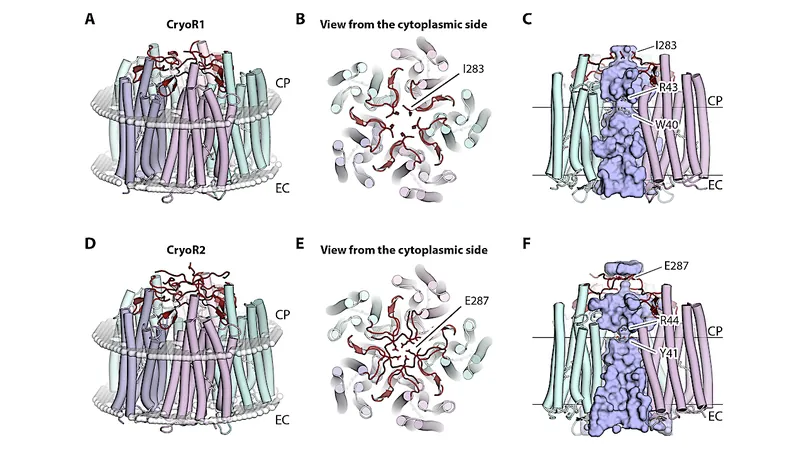
Unlocking the Secrets of Cryorhodopsins: The Frozen Proteins That Could Revolutionize Neuroscience
2025-07-07
Author: Rajesh
The Magic of Cold Environments
Picture the majestic glaciers of Greenland and the eternal snow of the Tibetan peaks. These breathtakingly beautiful landscapes are not just visual marvels; for scientist Kirill Kovalev, they are treasure troves of unique molecules capable of controlling brain cell activity.
Meet Kirill Kovalev: The Scientist Behind the Discovery
Kovalev, a Postdoctoral Fellow at EMBL Hamburg’s Schneider Group, is on a mission to uncover the enigmatic world of rhodopsins—colorful proteins that help aquatic microorganisms convert sunlight into energy. "I'm fascinated by these unusual rhodopsins and their potential untapped functionalities," he shares.
The Power of Cryorhodopsins
Cryorhodopsins, found in microorganisms thriving in freezing conditions, can switch cellular electrical activity on and off. This makes them crucial for innovative techniques like optogenetics, which neuroscientists use to manipulate neuronal activity using light.
A Serendipitous Discovery
While exploring protein databases, Kovalev stumbled upon a hidden group of rhodopsins that revel in cold climates, distinct from their warmer cousins found in seas and lakes. Named "cryorhodopsins," these proteins showcase striking similarities despite evolving in isolated environments.
Color Codes: The Key to Understanding Function
The color of each rhodopsin is vital. Most are pink-orange, but Kovalev's lab discovered a surprising palette of colors, including blue rhodopsins, which could open new avenues in neuronal control. Notably, blue rhodopsins react to red light—a game-changer for deep tissue interaction.
Potential Applications in Optogenetics
Kovalev and his team found that when brain cells expressing cryorhodopsins were exposed to UV light, they generated electrical currents, with color affecting cell excitability. This discovery has immense implications for future technologies, including optical cochlear implants that could restore hearing.
A New Light-Sensing Mechanism
Intriguingly, cryorhodopsins also function as UV light sensors, helping microbes protect themselves from harmful radiation—a trait not found in typical rhodopsins. This dual purpose remains a mystery, but it underscores the evolutionary adaptations of these proteins.
Tackling Technical Challenges
Diving deep into the intricate biology of cryorhodopsins required innovative techniques. Kovalev combined advanced structural analysis methods, including X-ray crystallography and cryo-electron microscopy, while meticulously working in light-free environments to study these sensitive proteins.
A Call for Further Exploration
Kovalev emphasizes the importance of scientific expeditions to cold habitats. "These unique environments hold secrets waiting to be uncovered, offering insights into the adaptations of their inhabitants that could lead to groundbreaking scientific advancements."
Conclusion: A Glimpse into the Future
With the discovery of cryorhodopsins, Kovalev is not just unveiling new proteins; he is potentially unlocking new pathways in neuroscience and biotechnology. The journey of studying these incredible molecules is just beginning, and the possibilities for innovation are endless.
 Brasil (PT)
Brasil (PT)
 Canada (EN)
Canada (EN)
 Chile (ES)
Chile (ES)
 Česko (CS)
Česko (CS)
 대한민국 (KO)
대한민국 (KO)
 España (ES)
España (ES)
 France (FR)
France (FR)
 Hong Kong (EN)
Hong Kong (EN)
 Italia (IT)
Italia (IT)
 日本 (JA)
日本 (JA)
 Magyarország (HU)
Magyarország (HU)
 Norge (NO)
Norge (NO)
 Polska (PL)
Polska (PL)
 Schweiz (DE)
Schweiz (DE)
 Singapore (EN)
Singapore (EN)
 Sverige (SV)
Sverige (SV)
 Suomi (FI)
Suomi (FI)
 Türkiye (TR)
Türkiye (TR)
 الإمارات العربية المتحدة (AR)
الإمارات العربية المتحدة (AR)